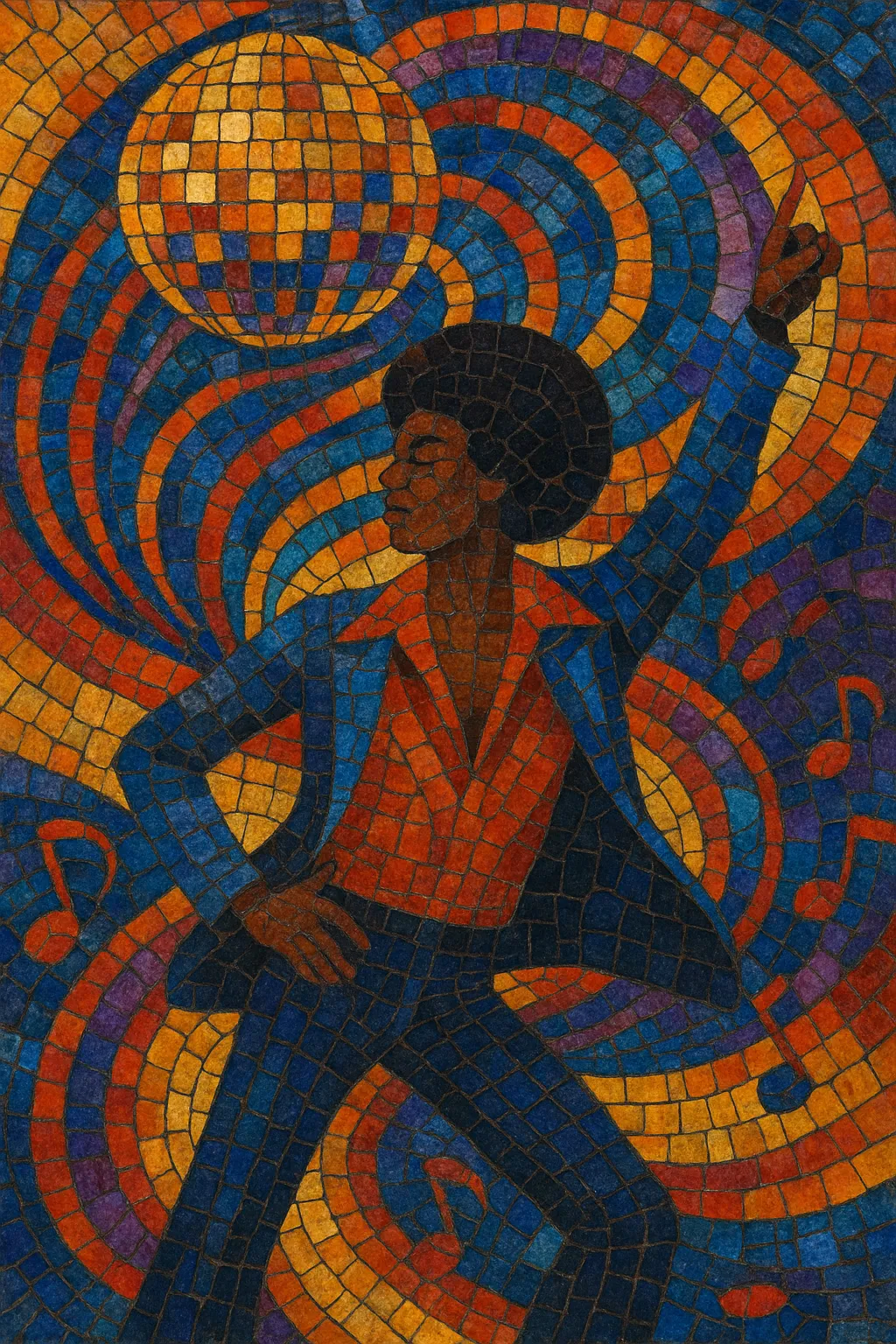Disco is a dance-focused style of popular music that emerged in early-1970s urban nightlife, especially in New York City and Philadelphia. It is defined by a steady four-on-the-floor kick drum, syncopated hi-hats and handclaps, octave-jumping basslines, lush string and horn arrangements, and a glamorous, celebratory sensibility.
Built for DJs and clubs, disco favored extended 12-inch mixes with breakdowns and build-ups that kept dancefloors moving. The sound drew from soul, funk, and Latin music, embraced orchestral textures, and became a cultural movement associated with Black, Latino, and LGBTQ+ communities before crossing over to mainstream pop by the late 1970s.
Disco coalesced in New York City and Philadelphia club scenes where Black, Latino, and LGBTQ+ audiences shaped a new, DJ-led dance culture. Musically it fused the rhythmic drive of funk and soul with orchestral strings and horns, while Latin percussion added polyrhythmic sparkle. Philadelphia soul’s silky production and extended grooves were crucial precursors, as were psychedelic soul’s expanded song forms.
By 1975–1979 disco was a dominant pop force. Iconic artists and producers—Donna Summer and Giorgio Moroder, Chic (Nile Rodgers and Bernard Edwards), the Bee Gees, KC and the Sunshine Band, Gloria Gaynor, Barry White, and The Trammps—defined the sound. The 12-inch single enabled longer mixes, and clubs like Studio 54 symbolized disco’s glamorous mainstream moment. Film soundtracks and radio further amplified its reach.
The 1979 “Disco Demolition Night” epitomized a backlash that was cultural as much as musical. While radio turned away, disco’s core innovations continued in the underground. Producers and DJs pivoted to post-disco, boogie, Hi-NRG, and the early house scenes in Chicago and New York, preserving the four-on-the-floor pulse and dancefloor-oriented arranging.
Disco’s DNA runs through house, dance-pop, Italo-disco, and many strains of electronic dance music. Periodic revivals—nu-disco and French house in the late 1990s/2000s, and recurring pop-disco waves—reaffirm its timeless combination of groove, melody, and communal celebration.


